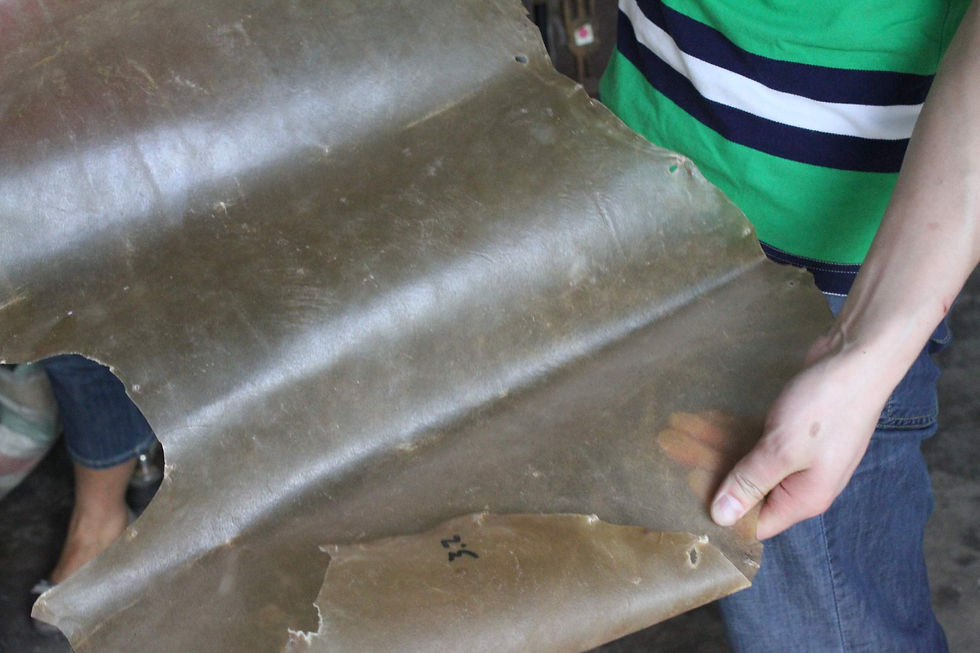
Chinese Shadow Puppetry
A comprehensive informational website
Tools & Materials


























Click on the thumbnails for a larger view.

Leather, cutting tools & pigment
Leather Hide
Regional forms traditionally used whatever hide was most readily available to them. Donkey and cow were and are still the most common, but sheep and water buffalo were also used. Currently, because of the incredible amount of time and energy it takes to produce, handmade cowhide is increasingly difficult to source. Much of the shadow puppet hide business has been moved to the machinated industry.
Scraping hide is a simple process of soaking and scraping a hide in continuous rounds until it becomes evenly translucent. Some master simply used cold water from natural sources in the colder months to soak their hides, while others used a homemade concoction of limewater to soften the hide and make the fur easier to remove.
Photos of the process:
Cutting Tools
While all regions have their own carving methods, the tool sets remain variations on a theme:
Knives
Punches (small metal sticks with carved ends to punch shapes in leather)
Wooden stick/mallet
Wooden/beeswax board
Sharpening stone
Pressing stones for hide
Wet cloth
Rulers/straight edges, curves
Pigment
Long ago, the range of color used was much more narrow and depended on available colored minerals within the region. Shaanxi region traditionally used a five-color system: red, green, black, yellow (the natural color of the hide) and white (the open cuts in the design). Recently, the range of color has expanded and now include the full rainbow.
Because mineral pigments are hard to come by and difficult to use correctly, many puppet makers are now using liquid watercolor mixed with an adhesive or finished off with a lacquer to prevent bleeding and fading.
The southwestern region of China is still using mineral pigments from nearby Myanmar (Burma) and their colors prove to be much more vivid than the others.